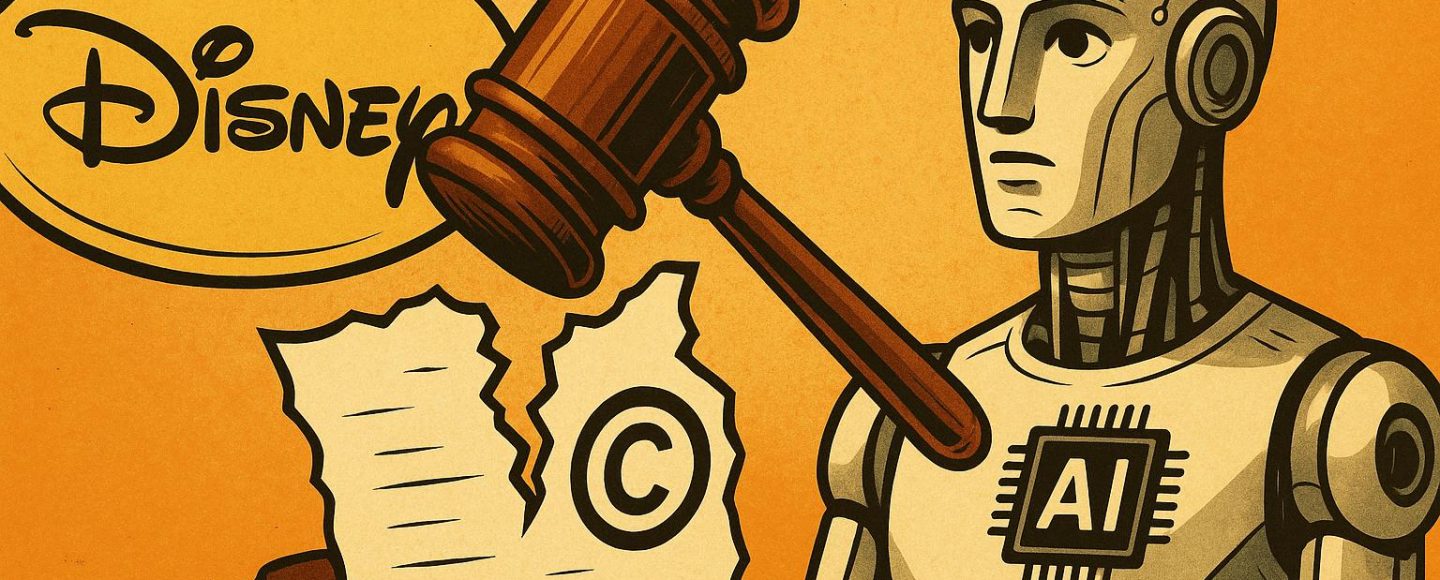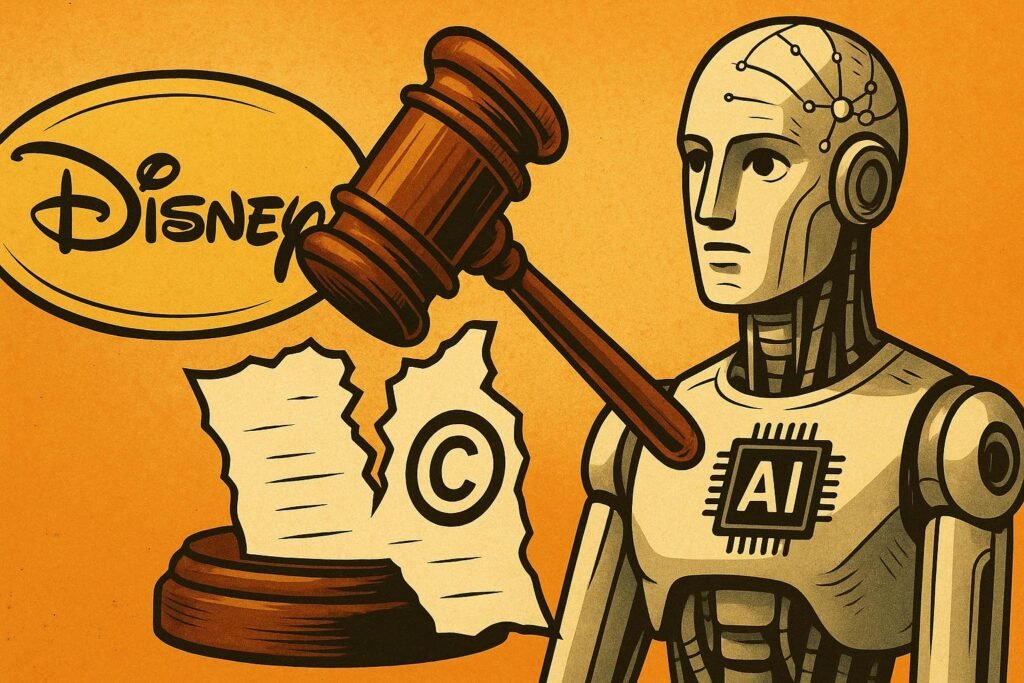
Disney Lawsuit Challenges AI Copyright Boundaries
Disney Lawsuit Challenges AI Copyright Boundaries highlights a pivotal conflict between artificial intelligence and traditional copyright law. As The Walt Disney Company initiates legal action against several AI developers for allegedly using copyrighted content without permission while training generative models, this case may reshape the legal treatment of AI and intellectual property. Its outcome could influence AI innovation strategies and how creators, corporations, and regulators tackle digital content ownership.
Key Takeaways
- The Disney lawsuit targets the unlicensed use of copyrighted material in generative AI training datasets.
- A key legal issue is whether training models using copyrighted works qualifies as fair use or infringement.
- The results of this case may define global legal boundaries for AI model development and transparency standards.
- Ongoing lawsuits from Getty Images and The New York Times reflect mounting disputes between content owners and AI developers.
Background on the Disney Lawsuit
In March 2024, Disney, alongside NBCUniversal and Warner Bros. Discovery, filed a lawsuit against several AI firms. The plaintiffs claim that these companies used copyrighted media such as scripts, video footage, and sound recordings to train generative AI tools. The method involved large-scale scraping of streaming platforms and web content, often without securing licenses or paying the authors of those works.
This lawsuit places the spotlight on whether using such data solely for AI model training purposes is protected under fair use provisions. If training a model does not result in exact reproductions of the input data, some developers argue, it should be eligible for protection. Yet, for companies like Disney, this approach undermines the value and control of their rights-managed content.
Understanding the AI Training Data Copyright Issue
Training data forms the foundation for how generative AI models learn to produce original outputs. These models often rely heavily on massive datasets that include copyrighted material. Texts, films, songs, and illustrations are fed into algorithms that detect patterns and relationships, allowing the system to create new responses.
Tech developers argue that model outputs are transformative and not direct copies of the original inputs. Still, creators object to this rationale, stating that such practices unfairly exploit their work for commercial applications. As interest in whether AI-generated content can be copyrighted grows, these tensions continue to drive legal threats and complaints globally.
Legal Landscape: A Broader Debate with Global Implications
The legal questions raised in Disney’s lawsuit echo other high-profile cases worldwide:
- Getty Images vs. Stability AI: Getty claims that Stability AI unlawfully copied millions of photos to build an image generator.
- The New York Times vs. OpenAI and Microsoft: The Times accuses these companies of using its articles without authorization to build large language models.
- European AI Act: This forthcoming law intends to regulate foundation models and mandate transparency in training data practices.
- US Copyright Office Hearings: Ongoing discussions are pushing to modernize legal frameworks for works created or influenced by artificial intelligence.
A central legal question remains: is it permissible to ingest copyrighted data in a way that does not result in direct reproduction but still contributes to revenue-generating applications? Courts have offered no definitive answer, bringing uncertainty for firms that depend heavily on large-scale AI training processes. For readers interested in the larger conversation, this issue is part of the wider set of AI copyright lawsuits in the US.
Legal professionals agree that traditional standards for judging fair use are increasingly stressed when applied to AI. University of California law professor Anjali Gupta observed that the transformative purpose standard, originally intended for cases like parody or academic critique, does not easily fit scenarios where thousands of copyrighted works are consumed by training systems.
A 2023 study published by the Harvard Journal of Law & Technology flagged several concerns around how AI scale disrupts the purpose of U.S. fair use doctrine. The commercial use of outputs from trained models weakens the argument that scraped content is being treated in a non-commercial or educational way.
William Hendricks, an attorney specializing in intellectual property disputes, noted that a ruling favoring AI companies could undermine incentives for future authors. At the same time, a ruling for content owners could significantly slow AI deployment due to licensing costs and legal complexity.
Impact on AI Development and Transparency
If Disney’s case results in stricter legal requirements, AI developers may be compelled to reveal data sources, seek paid licenses, or shift to public domain content. Transparency in AI systems and their foundational datasets would become not just an ethical preference but a regulatory expectation.
Some companies have anticipated this shift. OpenAI, for instance, has shared a transparency overview to address intellectual property concerns, while firms like Anthropic and Cohere are investing in models trained exclusively on public or approved data. These efforts also intersect with tools such as DRM systems and provenance trackers to identify whether generations result from copyright-protected materials.
Timeline of Events and Legal Milestones
| Date | Event |
|---|---|
| December 2022 | Getty Images files copyright lawsuit against Stability AI |
| July 2023 | OpenAI submits transparency report after criticism over training data secrecy |
| December 2023 | New York Times files lawsuit against OpenAI and Microsoft |
| March 2024 | Disney and other media firms sue AI companies over training data use |
| Q3 2024 (Projected) | Preliminary hearings scheduled for Disney case in U.S. District Court |
What This Means for Content Creators and Developers
The consequences extend beyond large studios. Independent writers, filmmakers, and other creators are beginning to use tools like digital watermarking and dataset monitoring interfaces to track where their work is used. At the same time, developers must begin considering copyright compliance during early design stages rather than treating it as an afterthought.
Firms involved in content summarization, media generation, or AI-assisted production will be closely examining the outcome. For example, teams exploring whether AI can be used to summarize videos are now factoring in the licensing status of source footage and metadata. Early adoption of compliance tools could reduce litigation risks as laws become clearer in the near future.
Looking Ahead: Will Precedent Be Set?
The Disney-led lawsuit could become one of the first major court decisions to formally address how generative AI interacts with copyright law. A favorable ruling for the plaintiffs may impose strict guardrails around content usage and lead to a surge in licensing-based business models. If the AI companies prevail, traditional copyright protections may lose some force in an increasingly automated content economy.
Legal specialists believe the case could move through the appellate system and potentially reach the Supreme Court. Global regulators are monitoring the proceedings as they finalize frameworks for AI accountability. One high-profile ruling may trigger a wave of regulatory reform and encourage uniform standards for licensing, model transparency, and dataset validation.
Those following the dispute can reference coverage of how Disney and Universal sued AI companies like Midjourney over similar claims, signaling a pattern likely to repeat.


